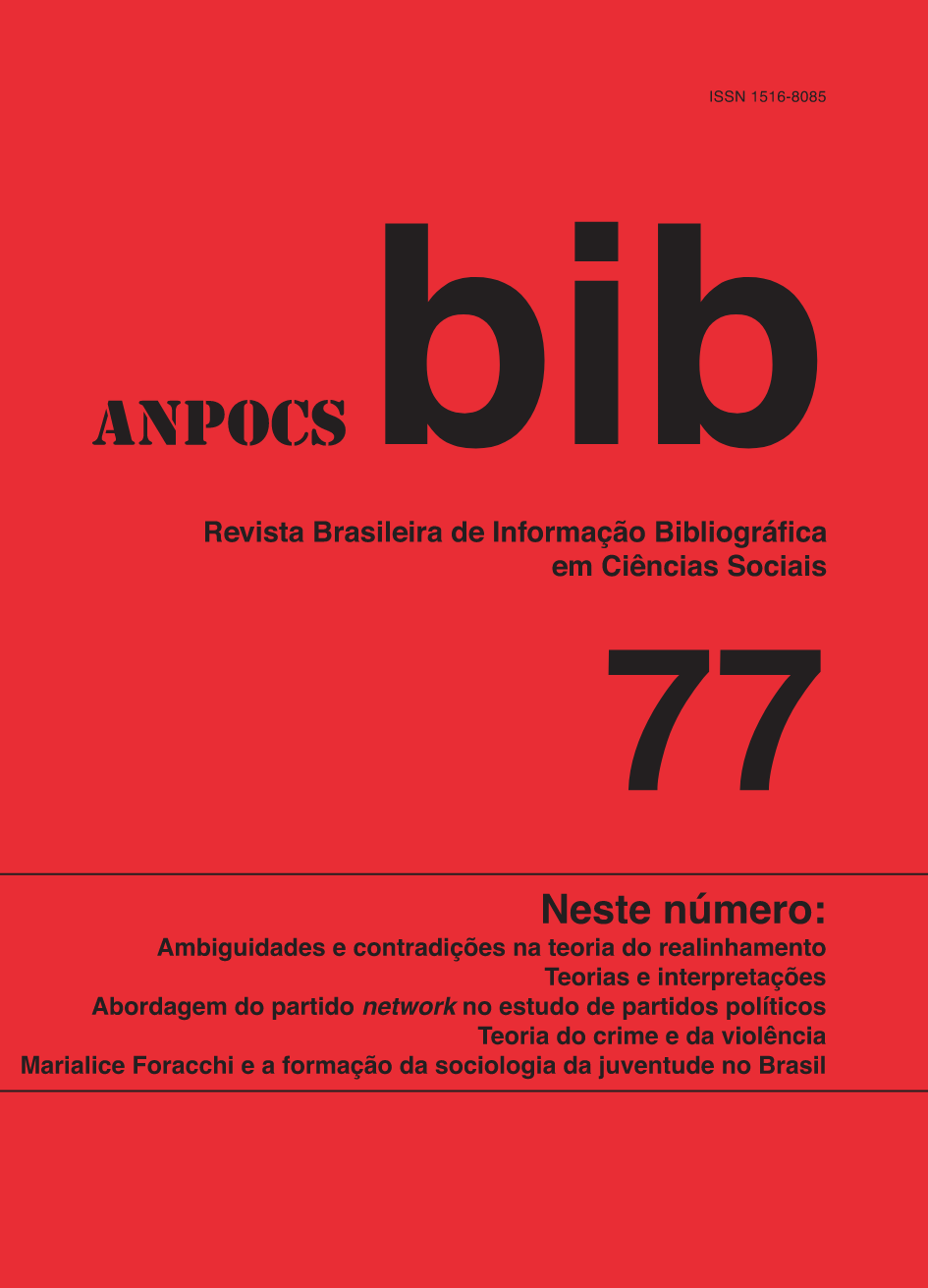Théories et interprétations récentes sur le processus décisionnel au sein des parlements contemporains
Mots-clés :
Congrès National, Règlement interne, Changement institutionnel, Pouvoir législatif, Relation entre les pouvoirs exécutif et législatifRésumé
Cet article résume les principales approches sur le fonctionnement des parlements contemporains, mettant en avant la question de l’organisation interne de leurs travaux législatifs. A partir d’une brève réflexion sur la valeur de la règle de la majorité en tant que garantie de décision parlementaire, l’article aborde l’attribution du pouvoir décisionnel à certains acteurs institutionnels, en se concentrant y compris sur les conséquences de la centralisation/décentralisation des travaux sur l’activité législative. Finalement, nous proposons une réflexion sur le thème des causes qui ont conduit le législateur à déterminer une organisation plus ou moins centralisée des travaux parlementaires. Nous remarquerons que cette question, encore peu développée au Brésil, et suppose, en termes comparés, davantage de recherches, notam-ment à propos du changement institutionnel des régiments des parlements contemporains
Téléchargements
Références
LEES-SMITH, M. A. The time-table of the house of commons. Economica, v. 11, p. 140-162, 1924.
LESTON-BANDEIRA, C. Da legislação à legislação: O papel do parlamento português. Lisboa: Imprensa de Ciências Sociais, 2002.
MAMADOUH, V.; RAUNIO, T. The committee system: powers, appointments and report allocation. Journal of Common Market Studies, v. 41, n. 2, p. 333-351, 2003.
MARTIN, A. Stabilite gouvernementale et rationalisation du regime parlementaire espagnol. Revue Française de Droit Constitutionnel, v. 41, n. 1, p. 27-66, 2000.
McKELVEY, R. D. Intransitivities in multidimensional voting models and some implications for agenda control. Journal of Economic Theory, v. 12, n. 3, p. 472-482, 1976.
MAYHEW, D. R. Congress: the electoral connection. New Haven: Yale University, 1974.
______. Divided we government: Party control, lawmaking, and investigations, 1946-1990. Yale: Yale University, 1991.
NEGRETTO, G. L. Making constitutions: Presidents, parties, and institutional choice in Latin America. Cambridge: Cambridge University, 2013.
NORRIS, P. The puzzle of constituency service. Journal of Legislative Studies, v. 3, n. 2, p. 29-49, 1997.
RASCH, B. E. Parliamentary voting procedures. In: DORING, H. Parliaments and majority rule in Western Europe. New York: St. Martin’s, 1995, p. 488-527.
______. Parliamentary floor voting procedures and agenda setting in Europe. Legislative Studies Quarterly, v. 25, n. 1, p. 3-23, feb. 2000.
REBUFFA, G. Teoria e prassi del negoziato parlamentare tra conflitto e consociazione. In: VIOLANTE, L. (org.). Annali della Storia d’Italia. Il Parlamento. Torino: Einaudi, 2001, p. 485-517.
REDLICH, Josef. The procedure of the house of commons: A study of its history and present form. London: Archibald, 1908-2004.
REDSLOB, R. Le régime parlementaire. Etude sur les institutions d’Angleterre, de Belgique, de Hongrie, de Suède, de France, de Tchécoslovaquie, de l’Empire Allemand, de Prusse, de Bavieère et d’ Austriche. Paris: Giard, 1924.
RIKER, W. H. Implications from the disequilibrium of majority rule for the study of institutions. American Political Science Review, v. 74, n. 2, p. 432-446, 1980.
RIVERS, D.; FIORINA, M. P. Constituency service, reputation, and the incumbency advantage. In: FIORINA, M. P.; RHODE, D. W. (Org.). Home style and Washington work. Ann Arbor: University of Michigan, 1991, p. 17-45.
RIVOSECCHI, G. Regolamenti parlamentari e forma di governo nella XIII legislatura. Milano: Giuffre, 2002.
ROHDE, D. W. Parties and leaders in the post-reform house. Chicago: University of Chicago, 1991.
SAIEGH, S. M. Political prowess or ‘‘lady luck’’? Evaluating chief executives’ legislative success rates. The Journal of Politics, v. 71, n. 4, p. 1342-1356, Oct. 2009.
SOUZA, M. T. O processo decisório na Constituição de 1988: Práticas institucionais. Lua Nova, v. 58, p. 37-59, 2003.
SCHICKLER, E. Disjointed pluralism. Princeton: Princeton University, 2001.
SHAW, M. Parliamentary committees: A global perspective. Journal of Legislative Studies, v. 4, n. 1, p. 225-251, 1998.
SHEPSLE, K. A. Institutional arrangements and equilibrium in multidimensional voting models. American Journal of Political Science, v. 23, n. 1, p. 27-59, 1979.
_______. The positive theory of legislative institutions: an enrichment of social choice and spatial models. Public Choice, v. 50, p. 135-179, 1986a.
_______. Institutional equilibrium and equilibrium institutions. In: WEISBERG, H. F. (ed.). Political science: the science of politics. New York: Agathon, 1986b, p. 51-82.
_______. The changing textbook congress. In: CHUBB, J.; PETERSON, P. (ed.). Can the government govern? Washington: Brooking Institutions, 1989, p. 238-266.
SHEPSLE, K. A.; WEINGAST, B. Uncovered sets and sophisticated voting outcomes with implications for agenda institutions. American Journal of Political Science, v. 28, n. 1, p. 49-74, 1984.
_______. The institutional foundations of committee power. American Political Science Review, v. 81, n. 1, p. 85-104, 1987.
SINCLAIR, B. Unorthodox lawmaking. Washington: CQ, 2000.
SHUGART, M. S. The Inverse relationship between party strength, and executive strength: a theory of politicians constitutional choices. British Journal of Political Science, v. 28, n. 1, p. 1-29, 1998.
TSEBELIS, G. Veto players: How political institutions work. Princeton: Princeton University, 2001.
TSEBELIS, G.; RASCH, B. E. Governments and Legislative agenda setting: An introduction. In:______. The role of governments in legislative agenda setting. New York: Routledge, 2011, p. 1-20.
TULLOCK, G. Why so much stability? Public Choice, v. 37, n. 2, p. 189-204, 1981.
WEHNER, J. Assessing the power of the purse: An index of legislative budget institutions. Political Studies, v. 54, p. 767-785, 2006.
WEINGAST, B. R.; MARSHALL, W. The industrial organization of congress. Journal of Political Economy, v. 96, n. 1, p. 132-163, 1988.
ZUBEK, R. Negative agenda control and Executive-Legislative relations in East Central Europe, 1997-2008. The Journal of Legislative Studies, v. 17, n. 2, p. 172-192, 2011.





